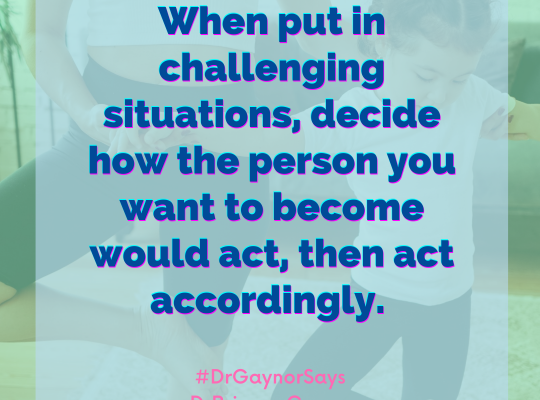Introduction
Personal growth is a lifelong process. You do not reach a point in your life where you’re done with personal growth and can coast on autopilot. The reality is that we are always growing and learning, whether we realize it or not. Personal growth plans are an excellent way to ensure that you stay on track with your own personal development goals while seeing results over time.
Look at your past situation, honestly.
Now that you’ve identified your goals, it’s time to make a plan for achieving them. To do this, you’ll want to look at your past situation honestly. What worked? What didn’t work? How can you improve your situation in the future?
Identify what you want in the future.
To begin, you must identify what you want in the future. Your goals should be specific and attainable, meaning they can be accomplished within a reasonable timeframe. For example, if your goal is to lose weight, it would be more effective to say that you want to lose 25 pounds than just saying “I need to lose weight.”
Writing down your goals will help them stick in your mind and increase their likelihood of getting done. If you write down a goal but later don’t feel like working toward it (e.g., because of laziness), writing down the reason why achieving this goal matters will remind you why achieving it matters. For example: “This will make me healthier” or “This will allow me to wear my favorite outfit again.”
Pinpoint specific skills you will need to accomplish your goals.
To create a personal growth plan that’s effective, you need to think about what skills you will need to accomplish your goals. For example, if your goal is to lose 20 pounds this year, one skill you would need is better understanding of nutrition and exercise.
This list should be specific to the goal and measurable. For example, for weight loss, it might look like:
- Knowledge of healthy foods that are low in calories but high in nutrients
- Awareness of portion sizes for different types of food (i.e., veggies vs. dessert)
- Ability to plan meals based on budget and grocery availability
Choose a timeline for your goals.
Once you’ve chosen your goals, write down a timeline for reaching them. You can choose a short-term goal (say, three months) or a long-term goal (say, six months). Either way, make sure that the timeline is realistic and achievable. It should also be measurable; this means there’s some way to tell whether you’re progressing toward completing your goal. Finally, if at all possible, avoid setting too rigid timelines. Having flexibility in your schedule will help keep you motivated during challenging times.
If nothing else helps guide your decision about what length of time would work best for each goal in your personal growth plan: think about how long it took for someone else who has achieved similar results in the past—and try to aim for roughly double those numbers!
Choose a method for learning or improving your skills.
Now that you’ve decided what you want to learn or improve upon, it’s time to choose a method. This is an important decision because the method you choose will determine how easy it is for you to commit and stick with your plan. Here are some things to consider:
- Fits your lifestyle: Your personal growth plan should fit into your life as seamlessly as possible. If learning French sounds great but requires two hours out of every night, then learn another language instead!
- Enjoyable: Learning has become such a chore in our society that many people avoid it altogether. A good way around this problem is by choosing something enjoyable, like learning the ukulele or photography; both fun hobbies can also be educational and help build other skills in the process of getting better at them (such as musicality).
- Effective: It may seem obvious, but if learning doesn’t make sense for your goal, don’t waste your time on it! There are dozens of music production classes online where students spend hundreds of dollars only to realize they don’t have the basic computer knowledge required for success–so why bother? Instead, find out which specific skills will lead directly towards achieving your goals, so there aren’t any unpleasant surprises later down the line when things aren’t going well like they used to.
Implement the plan and monitor your progress.
Keep on track by implementing your plan.
Making a personal growth plan is the first step toward improving your life, but without follow-through, it will just be a piece of paper collecting dust in your filing cabinet. Once you’ve figured out what you want to accomplish and how you’re going to get there, it’s time to begin working toward those goals.
If at any point during this process you find that your plan isn’t working for you or feels too challenging or overwhelming, don’t be afraid to adjust it! In fact, doing so may help with future goal setting as well because we learn from our mistakes and successes alike.
Set milestones to track progress.
Milestones are a great way to keep track of your progress and make sure you’re on track with your goals. They can be anything you want, but it’s important to set realistic and achievable milestones. For example, if your goal is to get a new job in six months, then you probably don’t need to set monthly milestones for getting interviews or job offers until the end of each month (and even then, only if they seem realistic).
On the other hand, if your goal is simply “learn how to code,” then tracking every single step towards learning how to code will help ensure that nothing slips through the cracks! Here’s an example of some possible monthly milestones:
- Read one chapter in a beginner coding book
- Watch one hour worth of YouTube videos about programming
- Write five lines of code
Take notes about what you have learned so far and make adjustments as necessary.
Now that you have identified your strengths, you can use this information to create a plan for growth. Keep in mind that it may take more than one year to complete your personal development goals. You may need to make adjustments along the way based on feedback from others, or simply because you change your mind about what is important to you.
As you begin working towards each goal, start by taking notes about what worked and didn’t work. These lessons will help inform any future plans as well as provide insight into how personal growth occurs over time.
Keep going, and don’t give up!
It’s important to remember that change doesn’t happen overnight, so be patient and keep going. Take it one step at a time, and don’t get discouraged if you don’t reach your goals immediately.
You also need to be realistic about your expectations; not every goal can be accomplished in a week or even a month. Some of them may take longer than others, so make sure you’re prepared for this journey before setting out on it.
Finally, flexibility is key: if one method isn’t working for you then try something else instead!
Takeaway : You can do it!
You can do it! This is your life and you are the only one who has the power to make it better. You have to believe in yourself, be patient, be consistent, willing to learn new things and take risks (because sometimes you might fail). But if you want something bad enough, there’s no way that you won’t get it.
Conclusion
We hope you have found this article helpful. With these steps, you can make a personal growth plan that will help you reach your goals. Remember to be patient with yourself and take it one step at a time!







